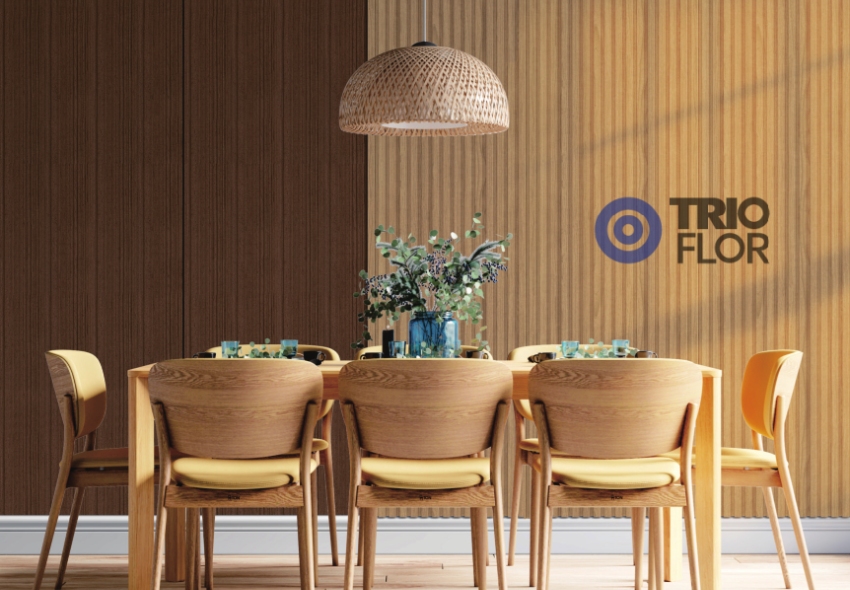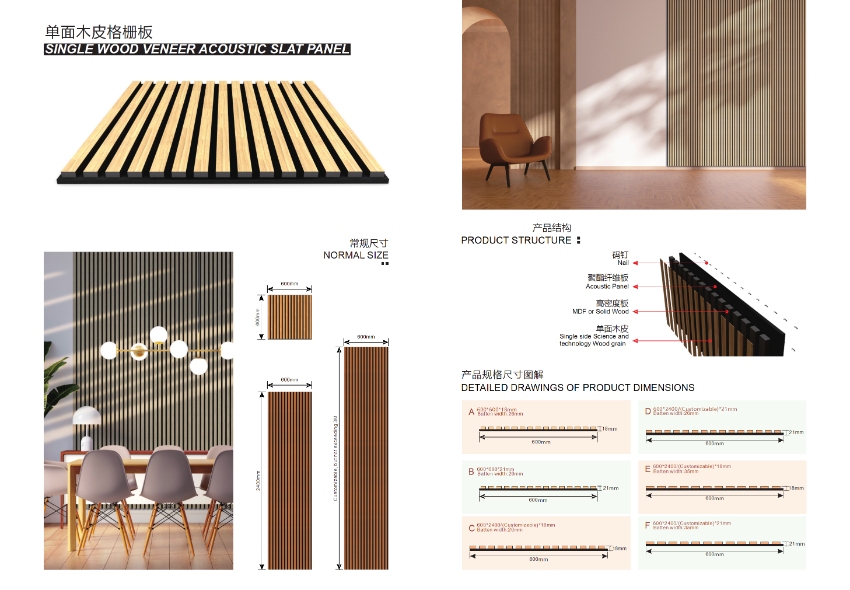
In the world of modern architecture and interior design, noise control has become more than just a technical necessity—it’s a key element in creating comfortable, productive, and inspiring environments. Among the most popular and stylish solutions on the market today are Wood Acoustic Wall Panels. But what exactly do these panels do? Can they block unwanted noise? And are they worth the investment?
Let’s explore the real-world benefits of wood acoustic panels—and how they contribute to both sound absorption and soundproofing in everyday spaces.

Wood Acoustic Wall Panels are decorative, slatted wall systems typically constructed from natural or engineered wood mounted over an acoustic felt backing. Designed to absorb sound waves, especially mid to high frequencies, they help reduce echo, reverberation, and noise reflections within a space. From home theaters and conference rooms to restaurants and open-plan offices, these panels combine visual appeal with functional performance.
But the true beauty of wood acoustic panels goes beyond their looks.
One of the main benefits of wood acoustic wall panels is their ability to reduce internal echo and improve audio clarity. In spaces with hard surfaces—like concrete, glass, or tile—sound waves tend to bounce and linger. This can lead to speech intelligibility problems and listener fatigue. By absorbing these reflections, wood panels create a more acoustically balanced environment.
TRIOFLOR acoustic wall panels have a sound absorption coefficient of more than 0.9 in the noise range of 125 - 4000 HZ. This means it can effectively shorten reverberation time and eliminate sound impurities. As a result, it can significantly improve the acoustics of any space and enhance speech intelligibility.

Unlike traditional foam panels or fabric absorbers, wood acoustic panels offer a warm, elegant aesthetic that enhances interior design. Available in a range of natural tones, stains, and finishes, they complement both contemporary and rustic interiors. You no longer have to choose between acoustic performance and visual style.
The use of natural materials like wood contributes to biophilic design, a concept known to improve occupant well-being and reduce stress. In office and educational environments, this can translate into better focus, reduced noise complaints, and increased productivity.
Here’s where it gets interesting: while wood acoustic panels are not soundproofing barriers by design, they can contribute to overall noise reduction—when used strategically.
The felt backing used in most high-quality wood panels can absorb a portion of airborne sound energy, minimizing the amount of sound that passes through walls or reflects back into the room. Additionally, thicker or denser panels, especially those combined with insulation layers behind the wall, can help lower noise transmission between adjacent spaces.
So, while they won’t block loud external sounds on their own, wood acoustic panels are a valuable part of a layered sound control system.
If you’re dealing with echoey interiors, unclear speech, or a need to improve audio quality—whether in your living room, office, recording studio, or retail space—Wood Acoustic Wall Panels are an ideal solution.
They are especially beneficial in:
Conference Rooms & Offices: Better speech clarity and fewer distractions.
Home Theaters & Studios: Richer audio and reduced reverberation.
Restaurants & Hotels: A more pleasant, quieter customer experience.
Schools & Libraries: Improved focus and speech intelligibility.
For customers looking to increase not only sound absorption but also achieve better noise isolation, here are a few expert tips:
Install Over Acoustic Insulation: Adding mineral wool or foam behind the panels increases both absorption and mass.
Seal Gaps: Ensure panels fit snugly and avoid air gaps that let sound leak through.
Combine with Other Elements: Use alongside acoustic ceilings, door seals, and thick carpets or curtains.
Panel Thickness Matters: Choose thicker panels for deeper acoustic absorption and improved performance in lower frequencies.
While Wood Acoustic Wall Panels may not serve as a standalone solution for complete soundproofing, they deliver a compelling mix of benefits:
Stylish visual enhancement
Echo and reverberation reduction
Contribution to overall noise control
Improved acoustic comfort
Eco-friendly and sustainable materials
In spaces where acoustic quality, design, and comfort are equally important, these panels provide a unique and effective solution.
At TRIOFLOR, we specialize in customized wood acoustic wall panel solutions for commercial and residential spaces. Whether you're designing a tranquil office, a focused classroom, or an immersive entertainment space, our products offer both performance and elegance.